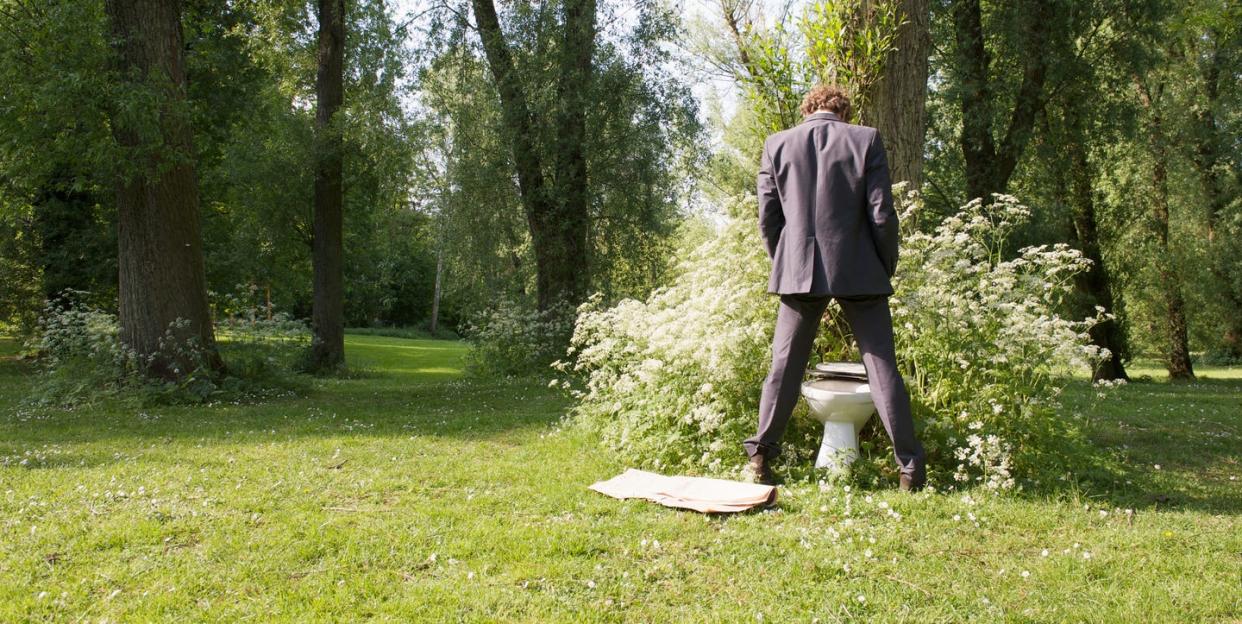Don’t Pee on Your Garden After You Read This

"Hearst Magazines and Yahoo may earn commission or revenue on some items through the links below."
Urine doesn’t have to end up in traditional wastewater treatment plants. It can be recycled to provide natural fertilizer for plants.
Replacing chemical fertilizers with urine would help cut environmental pollution from nitrogen and heavy metals.
Researchers around the world are experimenting with creating urine-diverting toilets and urine recycling treatments on a small scale.
Next time you water your plants, think about these seemingly disparate facts: One, plants need nitrogen, phosphorus, and potassium. Two, most of the nitrogen and phosphorus found in wastewater is thanks to human urine, and your pee contains potassium, too.
To be clear, we’re not advising you to go outside and pee on your tomatoes and zinnias. But if you did, it wouldn’t hurt them; in fact, an infusion of your pee in the soil around your plants might help them grow. Human pee has the potential to cut our reliance on chemical fertilizers if scaled up for worldwide use.
⏳You love science. So do we. We’ll help you make sense of it all—join Pop Mech Pro.
Researchers like those from OCAPI in France—an organization that works to improve food systems and human waste management—are interested in alternatives to the overuse of chemical fertilizers in agricultural farming around the world, because it has helped contribute to environmental pollution. Nitrogen released via fertilizer, arms manufacturing, and fossil fuel burning has doubled the amount of nitrogen compounds around the world in the past 100 years. About 80 percent of nitrogen from agricultural usage leaches into soil and waterways, causing damage to ecosystems.
Now Paris, the French capital, is about to put pee to the test. The publicly-owned planning authority Paris et Metropole Amenagement wants to install urine-diverting toilets in an “eco-quarter” of the city that has shops and 600 housing units. The urine will be collected and used to fertilize green spaces in the city. In another part of Paris, the European Space Agency plans to outfit its French headquarters with 80 urine-diverting toilets.
Other pilot projects turning pee into usable nutrient-rich water are already in place in Switzerland, Germany, the U.S., South Africa, Ethiopia, India, Mexico, and France. Sweden even started one all the way back in the 1990s within a few villages.
However, scaling up the process to large cities or whole regions of the world requires a full rehaul of wastewater infrastructure. That’s not an easy proposition, Julia Cavicchi of the United States Rich Earth Institute tells Tech Xplore. Sanitation processes would need to be retrofitted or replaced to treat urine separately, removing bacteria and purifying it. The world would need urine many times the weight of today’s chemical fertilizers, she says. And toilets themselves would need to be altered to allow a clean urine flow to be kept separate from solid waste.
Smaller, regional experiments are planned or already underway around the world. The developers behind these efforts hope to learn from individual experiences how to create a viable alternative to chemical fertilizers.
The problem with most fertilizers today is their synthetic nitrogen content. While they have proven very effective at boosting agricultural yields for the past 100 years, they have a downside. Fertilizers have infiltrated water systems, where they fuel the overgrowth of algae, killing many species of underwater life, according to the United Nations (UN). Heavy metals and nitrates have accumulated in the earth, and the resulting emissions from ammonia, nitrous oxide, and sulfur feed into the greenhouse effect, especially when they merge with vehicle fumes. The Columbo Declaration on Sustainable Nitrogen Management, a 2019 initiative of the UN, aims to slow down the runaway train of nitrogen emissions by halving nitrogen waste from all human-made sources by 2030.
Researchers and companies aren’t letting the challenges of urine recycling stop them.
Besides the planned toilets in Paris, the world is experimenting with other urine-diverting efforts. Eawag, the Swiss Federal Institute of Aquatic Science and Technology, has partnered with Swiss bathroom fittings company Laufen to create a urine-diverting toilet that channels urine into a separate section of the toilet so it can be sent away for independent processing. The urine flows down an edge shaped like the front of a teapot and ends up in a separate area, while flush water washes away any solid waste and toilet paper from the back of the toilet, just like a conventional one.
In another urine-recycling project, researchers from the Swedish University of Agricultural Sciences (SLU) in Uppsala started collecting urine from portable toilets, urinals, and urine-diverting toilets. After starting the work in 2021, the research team formed a company called Sanitation360, which plans to collect more than 18,492 gallons (70,000 liters) over three years. Humans produce enough urine to replace about a quarter of today’s nitrogen and phosphorus fertilizers, according to engineer Prithvi Simha, Sanitation360’s chief technology officer.
The team evaporates water from the collected urine, leaving the nutrients behind, which they powder and form into fertilizer pellets for standard farming machines. Already, a farmer in Sweden is using the pellets to grow barley for an ale brewery.
Once people drink the ale, perhaps their output can start the cycle all over again.
You Might Also Like

